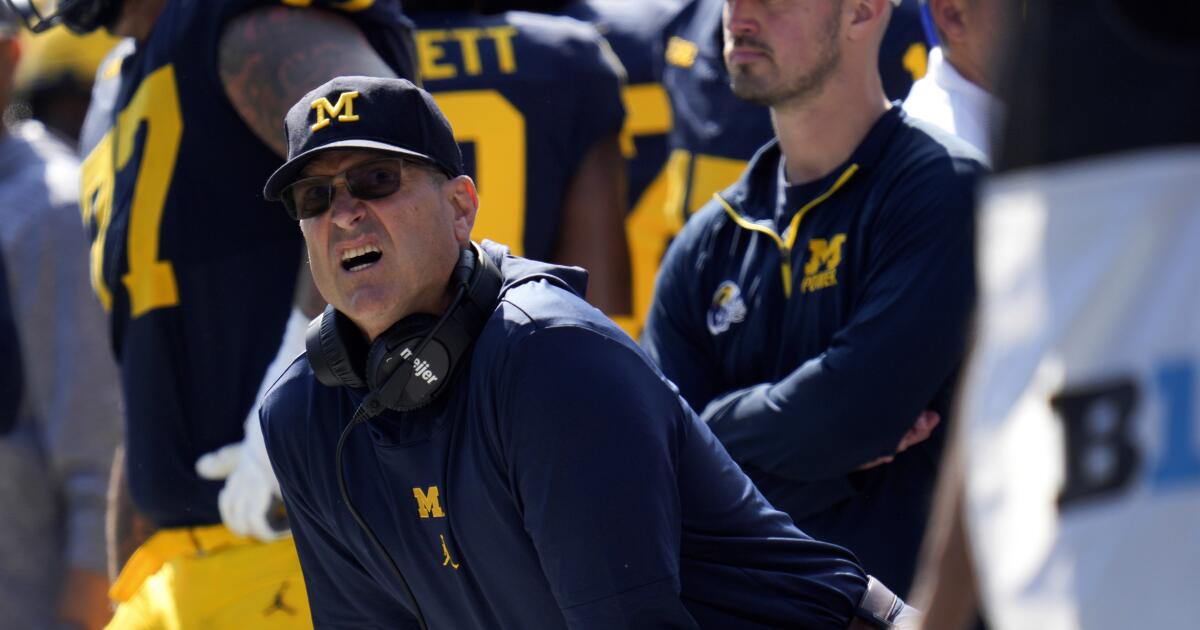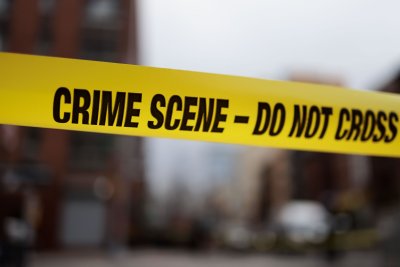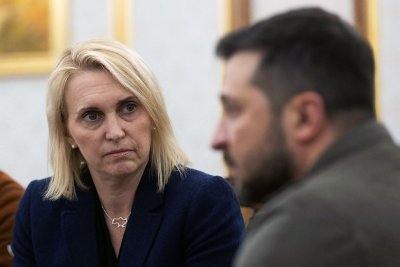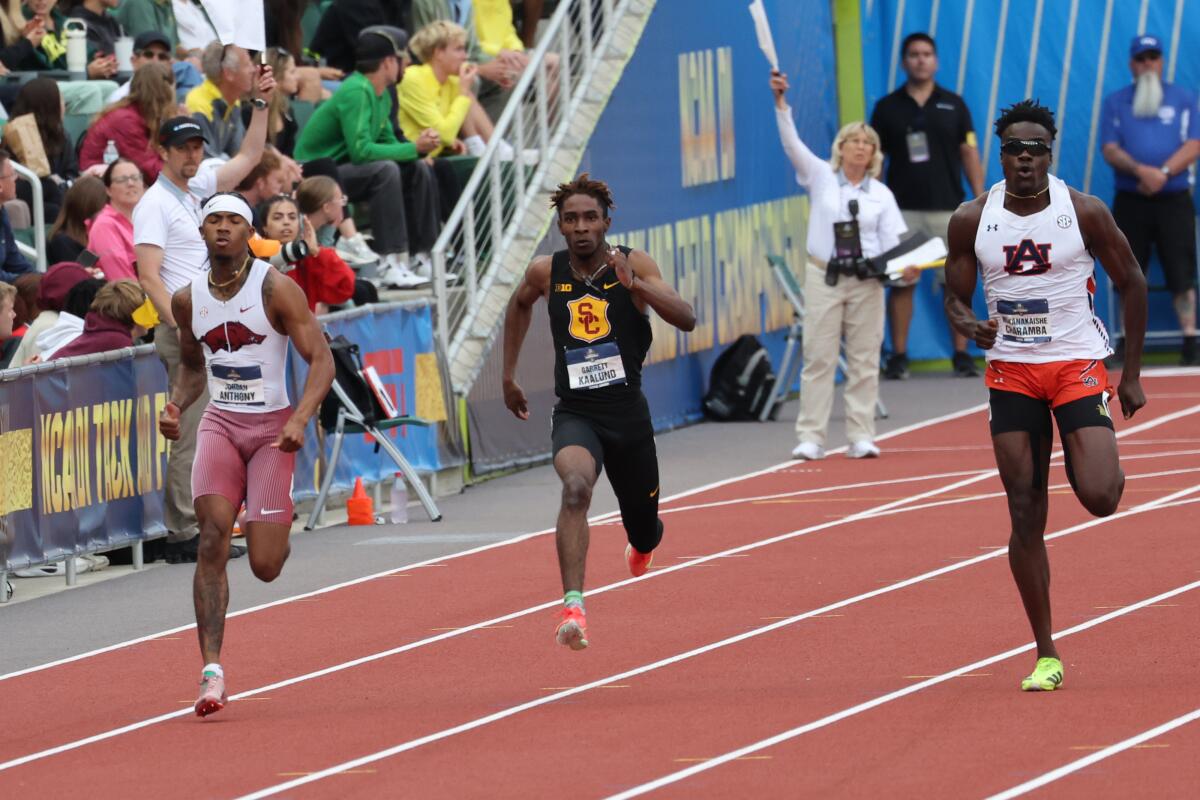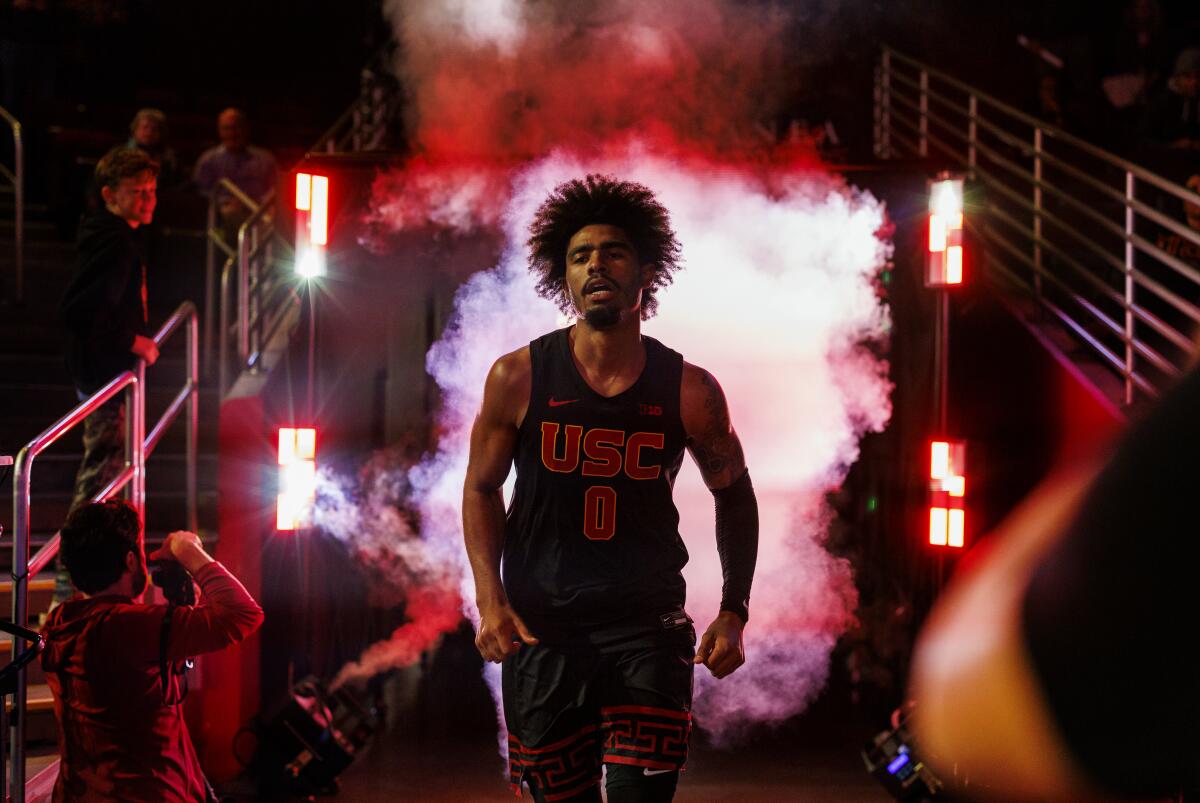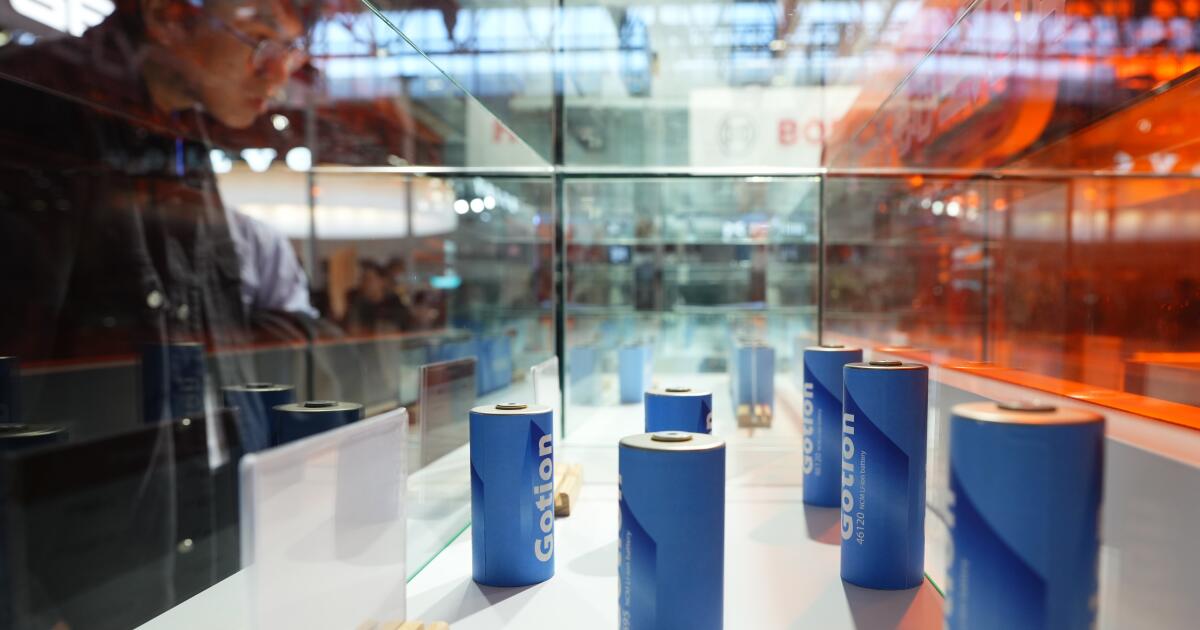Times of Troy: Game-by-game picks for the USC football team this season
After all the transfer portal trackers and the Lincoln Riley Finebaum rants and the landscape-altering, paradigm-shifting changes to the sport, it’s finally game week here at the Times of Troy.
We’re at the doorstep of a new USC football season, which means there’s no better time to subscribe to this newsletter and ensure you get the best USC analysis — not to mention TV recs, Big Ten betting picks, Midwest travel tips and more — delivered to your inbox every Monday morning.
For this week, it’s time for the Times of Troy to get down to business. We’ve told you what the best-case scenario would look like for Lincoln Riley and the Trojans this season. We’ve told you the worst case. So now, let’s talk about how we actually think this season will unfold at USC.
Newsletter
Fight on! Are you a true Trojans fan?
Get our Times of Troy newsletter for USC insights, news and much more.
You may occasionally receive promotional content from the Los Angeles Times.
Aug. 30 vs. Missouri State: USC was supposed to welcome Lane Kiffin back to the Coliseum in this one. Instead, they get a team playing in its first game as a Football Bowl Subdivision team. Missouri State had just six winning seasons in this century at the FCS level. Its record over the last five years (26-31) is the worst of any team making the FBS transition ever. The Bears have a quarterback with some potential in Jacob Clark, but that won’t be nearly enough.
Prediction: USC wins, 52-10
Sept. 6 vs. Georgia Southern: Clay Helton’s return to the Coliseum could be an uncomfortable affair, if only because Georgia Southern might actually be one of the best teams in the Sun Belt Conference. At the very least, they return a lot of experience on both sides of the ball. That shouldn’t trip up a team with the talent of USC. But don’t be surprised if the Trojans come out tight. A big mistake from USC makes things interesting before the defense clamps down in the second half.
Prediction: USC wins, 33-20
Sept. 13 at Purdue: It’s tough to know what to expect from a team that brought in 54 (!!) transfers, but I’ve seen enough of Purdue in recent years to not expect all that much. Barry Odom worked magic at Nevada Las Vegas, but it won’t be nearly that simple in West Lafayette, with a Big Ten schedule ahead. For USC, this is as smooth of a Big Ten road opener as they could hope for. It should be noted the Trojans did lose a game like this — to Maryland — a year ago. This time, USC takes the opportunity to prove it can push down the gas pedal late.
Prediction: USC wins, 38-13
Sept. 20 vs. Michigan State: Entering this game at 3-0 is essential because the road gets much rockier from here. If quarterback Aidan Chiles can make the leap in his second year with Jonathan Smith, the Spartans could make this interesting. But this is still a Spartan offense that ranked 123rd of 134 teams in points per game last season. They won’t be that bad in 2025, but this early in the season, I don’t see the Spartans keeping up. Especially with USC’s defense eager to make a statement.
Prediction: USC wins, 30-17
Sept. 27 at Illinois: I don’t think it’s an exaggeration to say the direction of USC’s entire season could be determined in Champaign, Ill., in late September. A win could catapult the Trojans into playoff contention. A loss could start a monthlong slide. They’re not the only ones with a lot on the line here, though. Illinois has its own playoff ambitions. Plus, the Illini return 18 starters, including quarterback Luke Altmyer, who’s already one of the best in the conference. I toiled over picking this game, but ultimately couldn’t get USC’s struggles on the road last season out of my head.
Prediction: USC loses, 24-23
Oct. 11 vs. Michigan: We know that Michigan will have a top-tier defense, but on offense, so much rides on a relative unknown, albeit one with a rocket right arm. True freshman quarterback Bryce Underwood looks the part of a Vince Young clone, but will he be able to handle a hostile atmosphere and keep his composure? Michigan will have already faced Oklahoma (at home) and Nebraska (in Lincoln) by this point, so this isn’t Underwood’s first rodeo on the road. The Coliseum will be rocking, and USC will be eager to avenge last season’s loss. But the Trojans offensive line will struggle to stay intact. And in a grind-it-out kind of game, I favor Michigan and its defensive front.
Prediction: USC loses, 28-24
Oct. 18 at Notre Dame: After back-to-back difficult defeats, USC travels to South Bend for arguably the toughest game of its season. We don’t know yet what to expect out of C.J. Carr and the Notre Dame passing attack, but that’s pretty much where the questions stop. The Irish have the best run game USC will face all season, led by Heisman candidate Jeremiyah Love, and probably the best overall defense, too. Unless Jayden Maiava has a star turn or USC’s defense creates turnovers, it could be a long trip for the Trojans.
Prediction: USC loses, 27-17
Nov. 1 at Nebraska: The bye comes at a critical time here for USC, having lost three in a row. In this scenario, we might be talking about whether or not Riley should continue with Maiava at quarterback. But traveling to Lincoln is no walk in the park. The Huskers have one of the more hostile environments in the Big Ten and could be primed for a leap this season. That said, I do think USC will exorcise its road demons somewhere on this schedule. The calls for five-star freshman Husan Longstreet might have gotten pretty loud by this point, but Maiava comes up big while the Trojans’ backs are against the wall.
Prediction: USC wins, 34-31
Nov. 7 vs. Northwestern: The short week after an emotional win leaves USC primed for a letdown, and the Wildcats should be improved with a passable quarterback in Southern Methodist transfer Preston Stone now under center. But the gap between these two teams is just too significant for Northwestern to bridge on the road. USC’s defense dominates, and Maiava continues to roll.
Prediction: USC wins, 41-16
Nov. 15 vs. Iowa: I think Iowa will surprise people this season, now that it finally has a quarterback in Mark Gronowski capable of slinging it. Kirk Ferentz will always have the Hawkeyes playing good defense, and they could make life difficult on Maiava and USC’s passing attack if the Trojans get behind. It’s just the sort of game where Riley’s coaching and in-game management will play a critical role. So, too, will D’Anton Lynn’s defensive prowess. I think his group comes up big in this one, giving Lynn another showcase for NFL teams looking for their next coordinator.
Prediction: USC wins, 24-17
Nov. 22 at Oregon: After so much roster turnover and with a new quarterback at the helm, Oregon is a big question mark to me. Between the two of USC’s toughest road tilts — Notre Dame being the other — this game feels more winnable to me. That said, I have a tough time envisioning USC heading into Autzen in late November. We just haven’t seen Riley’s teams win games like this yet. New Oregon running back Makhi Hughes will continue his surge as one of the Big Ten’s best backs, and the Ducks defensive front, led by Matayo Uiagalelei, will give USC’s offensive line fits.
Prediction: USC loses, 38-31
Nov. 29 vs. UCLA: Count me as someone who doesn’t buy the sudden hype for a Bruins offense led by Nico Iamaleava. For one, the weapons around Iamaleava aren’t nearly of the caliber as they were last season at Tennessee. UCLA’s defense was able to keep Maiava in check last season, but that was a full year ago. USC has a big day with its downfield offense, and the Trojans take the crosstown rivalry for the third time in four years.
Prediction: USC wins, 42-24
Official Times of Troy record prediction: 8-4
It’s only right, I guess, that after suggesting USC could go anywhere from 6-6 to 10-2, I end up settling right in the middle. USC’s defense is going to take a step forward this season — I feel confident about that much. But there are still too many questions on offense, namely along the offensive line, for me to trust the Trojans to beat teams like Illinois, Nebraska, Notre Dame or Oregon on the road. It’s up to Maiava to make me eat my words.
Matt Leinart led USC to the national title in 2004.
(Los Angeles Times)
—With DJ Wingfield not suiting up this fall, the starting offensive line that makes the most sense to me … has Tobias Raymond at left guard, and Justin Tauanuu at right tackle. Riley has harped for years about having his best five linemen, regardless of position, playing up front. Tauanuu has more pedigree and experience, both in practice and in games, than Micah Banuelos. Plus, when Redmond was being recruited, USC told him they saw him as a future NFL interior lineman. The bigger question may be at center, where Kilian O’Connor has kept even with transfer J’Onre Reed all camp.
—Count receivers Tanook Hines and Corey Simms as freshmen who could contribute. Ja’Kobi Lane and Makai Lemon will get the lion’s share of targets this season, but beyond them, the receiver room is wide open. Prince Strachan will presumably start the season on the outside opposite of Lane, while Zacharyus Williams and Jay Fair will factor in on a rotational basis. But before season’s end, don’t be surprised if either of these two works their way into a role.
—USC will once again pick its captains weekly. Most fans I’ve talked to didn’t love this setup last season, but Riley thinks it gives players an incentive to prove themselves every week. I think the real answer is probably that it doesn’t impact much at all. Players know who the team leaders are, whether they’re announced as captains or not.
—The SEC is finally adopting a nine-game league schedule. Which the Big Ten has been pushing for, publicly and privately. But while the Big Ten got what it wants in this case — and what’s best for college football, I might add — the SEC wouldn’t make this move for equity’s sake. My guess is that this compromise eventually leads the Big Ten to accept the SEC’s preferred model for the College Football Playoff. The Big Ten has held out to this point on a system with four automatic qualifiers for themselves and the SEC, the rest of the power conferences, including the SEC, want a format with five conference champions and 11 at-large bids.
—Auburn has decided to claim the 2004 national title for itself. L-O-L. The record books may say that USC vacated the 2004 national title. But let’s set aside that technicality for a moment to marvel at the audacity of claiming a championship more than two decades after the fact. And not just that, but claiming a championship that rightfully belongs to one of the greatest college football teams of the 21st century. That Trojans team set out to “leave no doubt” during that season after sharing the title in 2003, and they proceeded to go wire to wire at No. 1 in the AP poll, beating their opponents by an average net margin of 25 points per game. No one doubted who was the champion then, and no one doubts it now. No matter what the NCAA or Auburn happens to claim.
In case you missed it
Q&A: Former USC star Todd Marinovich says it was cathartic to finally write his own story
Carson Palmer embracing the challenges and joys of coaching high school football
Top USC receiver Ja’Kobi Lane cleared to play after breaking his foot during offseason
Judge’s ruling effectively blocks two players from competing for USC and UCLA this season
What I’m watching this week
Seth Rogen and Rose Byrne in “Platonic.”
(Paul Sarkis / Apple TV+)
Seth Rogen has been on an absolute heater lately — “The Studio” is probably my favorite show of 2025 to date — and his role in “Platonic” is just another feather in his cap. I could watch Rogen and Rose Byrne banter for hours on end, which is pretty much the premise of this Apple comedy about two platonic forty-something friends grappling with their lives. What we’ve seen of the second season so far is letting other members of the cast cook, too, which is always a great sign for where a comedy is headed.
Until next time …
That concludes today’s newsletter. If you have any feedback, ideas for improvement or things you’d like to see, email me at [email protected], and follow me on X at @Ryan_Kartje. To get this newsletter in your inbox, click here.


